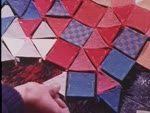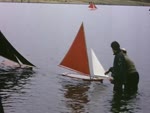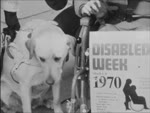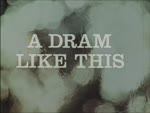ART OF COOPERING, the

This video is not available to view remotely
Full length video - onsite only
Please read Understanding catalogue records for help interpreting this information and Using footage for more information about accessing this film.
Title: ART OF COOPERING, the
Reference number: 4614
Date: 1973*
Director: [filmed by Iain Sutherland and Ian MacKenzie]
Sponsor: The Wick Society
Sound: silent
Original format: 16mm
Colour: col
Fiction: non-fiction
Running time: 22.22 mins
Description:
Made by the Wick Society, this film documents in detail the craft of coopering (barrel making) in the workshop of coopers John Swanson & John Gunn, Wick. The film was made a few weeks before the workshop closed down altogether.
See also ref. 0394.
Shotlisted with the help of Ian Sutherland.
Credits:
The Wick Society
Coopers John Swanston & John Gunn, Wick.
Shotlist:
[Please note film viewing copy has no end credit]
title credits (0.49) Preparing Materials ints busy workshop of Coopers John Swanston & John Gunn, Wick. Opening shot features John Swanston tarring prefabricated steel hoops (bilge hoops) with arcangel tar. Hangs hoops from roof [coopers anvil in background - the 'studie'] (1.39) a man makes tool using 'adze' (pronounced 'eech') making a beechwood driver to be used to shape barrel (1.56) shards of wood shavings are brushed and collected from workbench [to be used in fire] (2.07) John Gunn selecting staves for barrels, we also see prefabricated lids in shot. 'Jointer' tool checked by hand, lined up vertically and planed (3.11) planks of wood that will be ultimately be crafted into barrel are laid out on table, a curved chalk line is drawn across them and the planks are skillfully gathered up stored vertically (4.34) Raising the Barrel [trussing hoop] two metal rings are fixed around the planks of wood and the barrel starts to take shape. The wood is hammered (with considerable force) into position, using a 'passer hoop' which is removed at the end (6.38) Trussing Barrel the half finished barrel is rolled outside and submerged in water, before a small fire of woodshavings is lit, over which the barrel is placed. A cooper hammers the barrel into shape, using metal hoop. With speed and skill he quickly walks around the barrel, hammering and wetting the wood as required, until the barrel is shaped and finished with the metal rings around it (11.30) Working Out slow pan over various craft tools laid out on bench (11.55) using various shaped curved planing tools, the edges of the barrel are smoothed (13.46) with only the top and bottom metal rings now in position, the cooper hammers the barrel into shape further using another 'chisel type' tool (13.59) barrel is placed onto a turning machine spinning the barrel rapidly - he manually 'plucks' planes it down and clears the shavings into a bucket when complete (15.05) barrel has two wider black metal bands fixed around it, hammering into place. The original (smaller) metal band is removed and he hand planes the area exposed. Circular piece of wood is fixed into position as the base of the barrel using a wide metal band rivetted into position. The process is repeated at the other end of the barrel (20.11) Walking Barrels two men skillfully 'walk' the barrels across back yard and into storage area by spinning them along using their hands two at a time. Exts work area - barrels and equipment are visible through windows. Repeated gvs walking barrels (21.54) ints store, with barrels piled high (22.08) The End (22.22)






